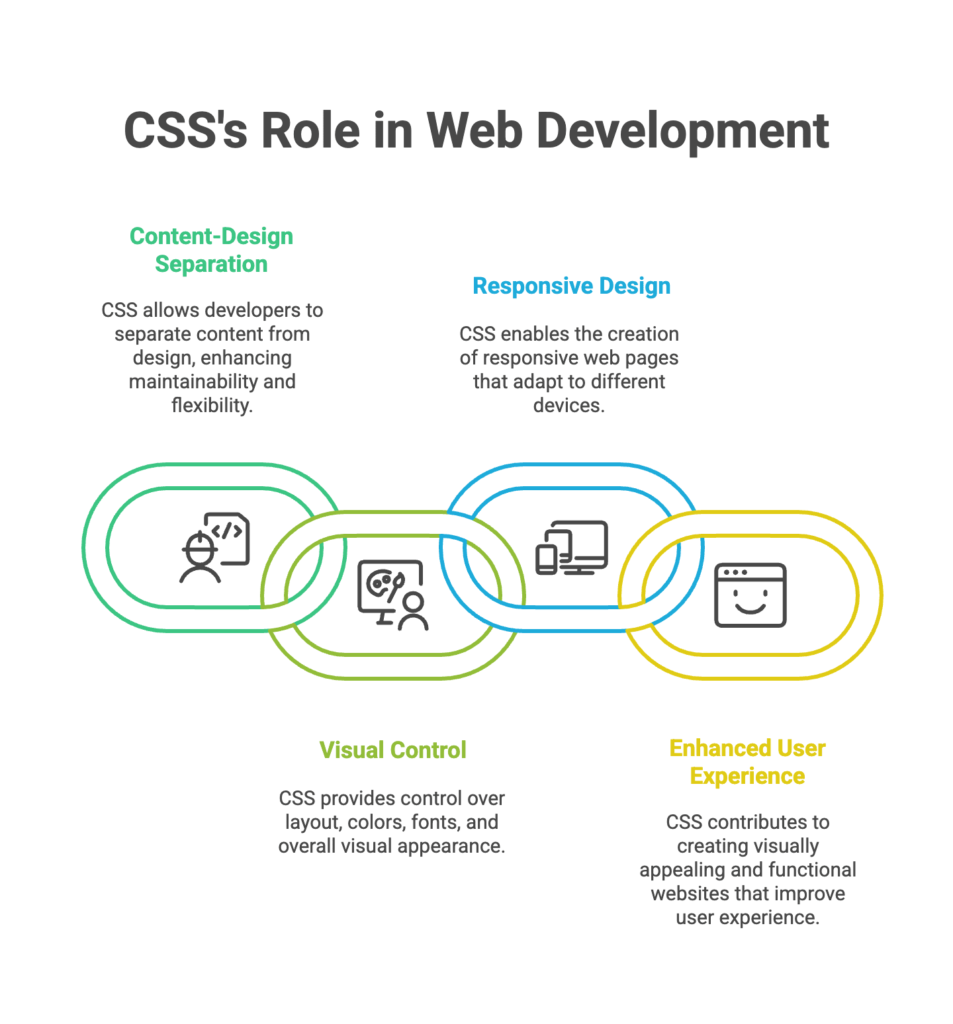Introduction to CSS
CSS stands for Cascading Style Sheets. It's a stylesheet language used for describing the look and formatting of a document written in HTML or XML.
Why Use CSS?
- Separation of Concerns: CSS separates the structure (HTML) and presentation (CSS) of a web page.
- Consistency: It ensures a consistent look across multiple pages.
- Flexibility: Allows easy modifications and updates to the design.

Introduction to CSS Syntax
selector {
property: value;
/* More properties and values */
}
Element Selector: Targets HTML elements.
p {
color: blue;
}
Class Selector: Targets elements with a specific class.
.highlight {
background-color: yellow;
}
ID Selector: Targets a specific element with a unique ID.
#header {
font-size: 24px;
}
CSS Properties
Common Properties
- Color: Defines text color.
- Font: Sets the font properties.
- Margin: Controls spacing outside an element.
- Padding: Controls spacing inside an element.
In this chapter, we covered the fundamental concepts of CSS, including syntax, selectors, properties, the box model, positioning, and responsive design. With this knowledge, you have a solid foundation to start styling and designing web pages using CSS. Practice these concepts, experiment with different styles, and stay curious as you delve deeper into the world of CSS.Happy Coding! ❤️
